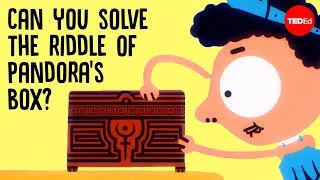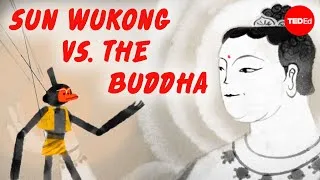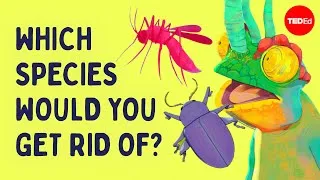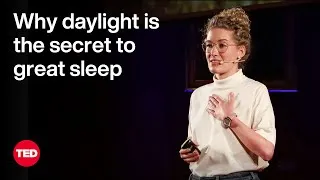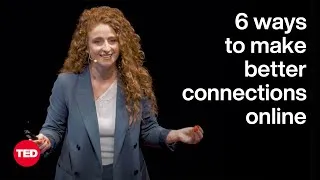These animals are also plants … wait, what? - Luka Seamus Wright
1,496,090 views ・ 2022-06-14
請雙擊下方英文字幕播放視頻。
譯者: Camila Lin
審譯者: Bruce Sung
00:07
Take a good look at this slug.
0
7712
2127
好好看看這隻海蛞蝓。
00:09
No, not that— that’s a leaf.
1
9839
2044
不,不是那個,那是一片葉子。
00:12
This slug.
2
12050
1459
這隻才是海蛞蝓。
00:13
There we go.
3
13760
1376
我們開始吧。
00:15
Elysia chlorotica may not look like much—
4
15136
3754
綠葉海天牛看起來
可能真的不怎麼樣,
00:18
okay, it looks like a bright green leaf—
5
18890
2252
好吧,牠看起來
就像一片鮮豔的綠葉,
00:21
but it’s one of the most extraordinary
creatures around.
6
21142
3170
但牠是這附近最驚人的生物之一。
00:24
Living in salt marshes
along the east coast of North America,
7
24687
3670
牠住在北美東部沿岸的鹽沼中,
00:28
it can go about a year without eating.
8
28357
2920
可以幾乎整整一年都不進食。
00:31
During that time, it lives like a plant.
9
31736
4004
在不進食的時候,它活得就像植物。
00:36
Generally speaking, animals are
what are called heterotrophs,
10
36324
3920
通常而言,動物都是
所謂的「異養生物」,
00:40
meaning they can’t produce their own food—
they’re consumers of other life.
11
40244
4922
也就是無法自己製造食物,
需要以其他生物為食的生物。
00:45
Plants, meanwhile, are autotrophs,
or producers:
12
45166
4296
而植物則是「自養生物」,
也可稱為「生產者」:
00:49
they can synthesize their own fuel
from sunlight, CO2,
13
49462
3962
它們能以陽光、二氧化碳
及其他無機化合物為原料,
00:53
and other inorganic compounds.
14
53424
2503
合成自己所需的養分。
00:55
Plants do this by using organelles
called chloroplasts,
15
55927
4004
植物藉著使用名為
葉綠體的胞器來完成這件事。
00:59
which give them their bright colors
16
59931
1710
葉綠體賦予植物鮮豔的顏色,
01:01
and convert sunlight into food
through photosynthesis.
17
61641
3378
並透過光合作用,
將陽光轉化為養分。
01:05
Elysia is what’s called a mixotroph:
18
65478
3670
海天牛則是所謂的
「混合營養生物」:
01:09
it can both consume food, like animals,
19
69190
2586
牠既能像動物一樣進食,
01:11
and produce its own
through photosynthesis, like plants.
20
71776
4129
也能像植物一樣,
透過光合作用製造養分。
01:15
In fact, Elysia steals its ability
to photosynthesize
21
75905
3670
事實上,海天牛的光合作用能力,
01:19
from the algae it eats
by piercing the algal cells
22
79575
3546
是從牠吃掉的藻類那裏偷來的。
01:23
with specialized pointy teeth,
called radula.
23
83121
3378
牠會用名為「齒舌」的
特化尖牙,穿刺藻細胞。
01:26
It sucks the cell empty and digests
most of its contents,
24
86958
3837
牠會將藻細胞吸乾,
消化大部分的內容物,
01:30
but the chloroplasts remain intact.
25
90795
2502
留下完好無缺的葉綠體。
01:33
They’re incorporated into the epithelial
cells lining Elysia’s digestive system
26
93756
4797
它們會被海天牛
消化系統中的上皮細胞整合,
01:38
that branches throughout its flat body.
27
98553
2252
而消化系統則分支遍佈於
扁平的身體各處。
01:41
This makes the slug look
even more leaflike,
28
101347
2836
這讓海天牛看起來更像一片葉子,
01:44
providing camouflage as well as food.
29
104183
2920
提供食物的同時,也為牠加上偽裝。
01:47
As incredible as this adaptation is,
30
107854
2377
儘管這種適應力讓人難以置信,
01:50
there are more than 70 species of slug
that steal chloroplasts from their food.
31
110231
5923
但 70 多種蛞蝓都能
自食物中偷走葉綠體。
01:56
What makes Elysia
and a few closely related species
32
116154
3420
綠葉海天牛及其他生活於地中海
和太平洋的類似物種的特別之處,
01:59
in the Mediterranean and Pacific unique
33
119574
2627
02:02
is how long they can hold
onto chloroplasts—
34
122201
2920
在於牠們能將葉綠體保留多久。
02:05
most other slugs keep them
for a few weeks at most.
35
125121
3295
大部分的蛞蝓,
最多只能保留幾個禮拜。
02:08
This longevity seems to be due
to the survival abilities
36
128708
3503
而這種長存的能力,似乎
和色素體及蛞蝓的存活能力相關。
02:12
of both plastids and slugs.
37
132211
2670
02:15
Specifically, the chloroplasts
of certain algae
38
135089
3212
說得更清楚一點,某些藻類的葉綠體
02:18
can repair their own
light-harvesting systems,
39
138301
3169
可以自行修復光合系統,
02:21
while most chloroplasts are thought
to rely on their host cell
40
141470
3462
但我們認為,大多數的葉綠體
都得靠它們的宿主細胞
02:24
and its genes for repairs.
41
144932
2086
以及基因來修復。
02:27
This makes the chloroplasts
able to sustain themselves
42
147393
2961
這讓葉綠體
能在海天牛體內存活更久。
02:30
for longer inside the slug.
43
150354
2378
02:33
Meanwhile, the slug adjusts its gene
expression
44
153274
2878
同時,綠葉海天牛也會
調整自己的基因表現,
02:36
to improve its relationship
with the chloroplasts
45
156152
2878
改善自己和葉綠體的關係,
02:39
and removes damaged plastids
46
159030
2377
並移除受損的色素體,
02:41
to avoid accumulation
of potentially damaging chemicals.
47
161407
3128
避免在體內堆積
具潛在傷害性的化學物質。
02:44
Though few species can steal organelles
from another species’ cell,
48
164952
4380
雖然能偷取其他物種
細胞內胞器的物種不多,
02:49
these slugs are far from alone
in getting an assist from plants.
49
169332
4254
這些海天牛卻不是唯一
從植物那裏獲得幫助的生物。
02:53
Organisms as diverse as corals,
50
173711
2753
許多生物,例如珊瑚、
02:56
giant clams and sponges have symbiotic
algae living inside their cells,
51
176464
5672
硨磲貝及海棉,
細胞內都存有共生藻類,
03:02
supplying them with organic compounds
through photosynthesis.
52
182136
4129
藉光合作用,
為牠們提供有機化合物。
03:06
In turn, they supply their little helpers
with shelter and inorganic compounds.
53
186807
5339
而牠們則提供庇護和
無機化合物給藻類小幫手。
03:12
Some of these mixotrophs even transmit
the algae to their offspring.
54
192146
4171
有些混合營養生物,
還會將共生藻傳給下一代。
03:16
Without the aid of these algae,
55
196734
1960
若少了這些共生藻的幫助,
03:18
filter-feeding corals, clams, and sponges
would not gain enough nutrition
56
198694
4672
濾食性的珊瑚、貝類和海綿,
就無法獲得足夠營養,
03:23
in the nutrient-poor tropical ocean,
57
203366
2460
在缺乏營養鹽的熱帶海域生活,
03:25
and the dazzling coral reefs they build
simply would not exist.
58
205826
4338
也根本不會出現
牠們堆疊出的壯麗珊瑚礁。
03:30
Mixotrophy even cuts both ways:
59
210665
2669
但混合營養的進食方式有好有壞。
03:33
an alga called Tripos furca can consume
several microscopic animals a day,
60
213334
6089
一種叫做叉狀角藻的藻類,
能每天吞噬數個微生物,
03:39
allowing it to survive
in darkness for weeks.
61
219423
3212
讓自己在黑暗中存活數星期。
03:42
Tripos is in turn eaten
by other mixotrophic algae,
62
222885
3754
但叉狀角藻也會被
其他混合營養藻類吃掉,
03:46
providing frequent opportunity
for exchange of organelles
63
226639
3420
提供頻繁交換胞器的機會,
03:50
such as chloroplasts.
64
230059
1752
例如葉綠體。
03:52
This seems to allow some algae
to survive in parts of the dark ocean
65
232061
4296
這似乎能讓某些藻類
生存於黑暗海洋的部分地區,
03:56
such as the Mariana Trench,
66
236357
1960
例如馬里亞納海溝,
03:58
which plants otherwise wouldn't
be able to inhabit.
67
238317
3003
若非如此,植物便無法在那裏存活。
04:02
The processes by which Elysia
becomes photosynthetic
68
242071
3378
綠葉海天牛演化出
光合作用能力的過程,
04:05
and Tripos switches between feeding modes
69
245449
2878
以及叉狀角藻切換進食模式的過程,
04:08
are reminiscent of what scientists believe
led to the origin of all plants.
70
248327
5130
讓人想起科學家提出的植物起源。
04:13
Single-celled animals preyed
on cyanobacteria.
71
253457
3921
單細胞動物捕食藍綠藻。
04:17
Some of these tiny plants were not
digested and lived on in the animal cells,
72
257378
5088
某些藍綠藻並沒有被消化,
繼續活在單細胞動物體內,
04:22
eventually giving rise to chloroplasts.
73
262466
3796
最終產生了葉綠體。
04:26
But these first eukaryotic plants were
soon consumed by other animals,
74
266262
4671
但這些首批真核植物,
一下子就又被其他動物吃掉,
04:30
which hijacked the precious chloroplast,
just like Elysia.
75
270933
3921
牠們就像海天牛一樣,
搶走了珍貴的葉綠體。
04:35
And following the example
of eating and being eaten,
76
275688
3045
就這樣,不斷進行吃與被吃的循環,
04:38
we’ve seen in the case of Tripos,
77
278733
2043
我們已經看過真叉角藻的例子,
04:40
this chloroplast heist happened
up to three times,
78
280776
3295
「葉綠體搶奪戰」最多發生了三次,
04:44
giving rise to plastids
with four membranes
79
284071
2878
產生了有四層膜的色素體,
04:46
and the ocean’s most productive
plants and forests.
80
286949
4004
以及海洋中最多產的植物與森林。
New videos
Original video on YouTube.com
關於本網站
本網站將向您介紹對學習英語有用的 YouTube 視頻。 您將看到來自世界各地的一流教師教授的英語課程。 雙擊每個視頻頁面上顯示的英文字幕,從那裡播放視頻。 字幕與視頻播放同步滾動。 如果您有任何意見或要求,請使用此聯繫表與我們聯繫。


